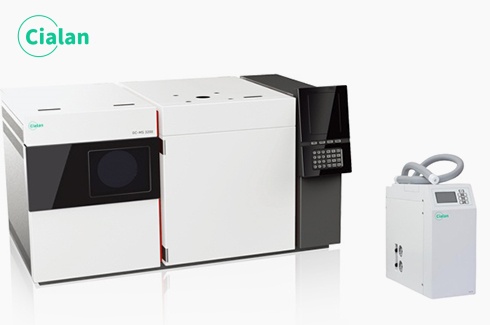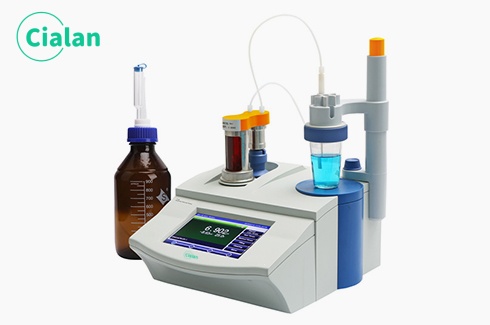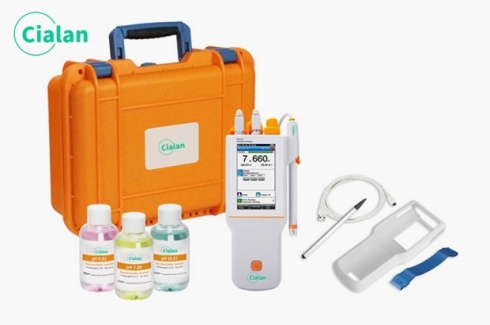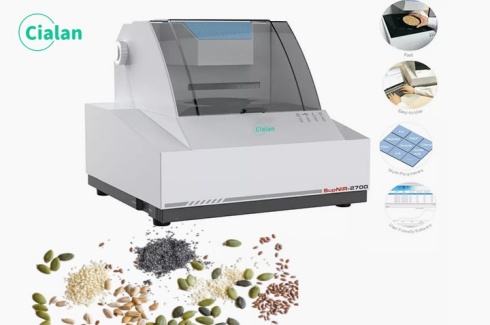Molecular distillation: Quality assurance and performance improvement in the field of photoresist materials.
Molecular distillation plays an important role in the field of photoresist materials.
1. In the modern semiconductor industry, photoresist materials play a vital role, playing a decisive role in the chip manufacturing process. However, manufacturing high-purity, high-quality photoresist materials is not easy. In this field, molecular distillation equipment has become a powerful driving force. The application of short-range molecular distillation equipment in the field of photoresist monomers involves the purification and purification of complex chemicals such as semiconductor photoresist monomers, TFT flat layer photoresists, membrane material intermediates and polyimide monomers. The principles of these applications are based on the properties of short-path molecular distillation and are suitable for the needs of high purity and precision chemical processes.
2. Photoresist monomer is a key material in integrated circuit manufacturing, and molecular distillation equipment can be used to refine and purify photoresist monomer. High-purity photoresist monomer can improve the resolution and imaging quality of photoresist, thereby improving the accuracy and performance of integrated circuit manufacturing.
3. It plays a key role in the production and application of photoresist monomers. Photoresist monomer is a polymer compound commonly used in photolithography processes. The photolithography process is a critical step in microelectronics manufacturing and is used to form precise patterns on semiconductor devices. The production of photoresist monomers involves complex chemical reactions and purification processes, in which molecular distillation equipment plays a vital role. Photoresist monomers are used to pattern integrated circuits and other micro and nano devices. Using molecular distillation equipment, the required photoresist monomers can be extracted and purified from the mixture through highly precise temperature control and separation techniques, ensuring that their quality and purity meet the standards required for microelectronics manufacturing. High-purity photoresist monomers can provide better resolution and pattern reproducibility, help improve the production efficiency and performance of microelectronic devices, and obtain high-purity, low-residue and accurately-proportioned photoresists Monomer ensures the production of high-precision and high-performance microelectronic components.
4. In the microelectronics manufacturing process, photoresist monomer is a key material for making integrated circuits. Photoresist materials are a vital part of the modern semiconductor industry and play a key role in the microelectronic chip manufacturing process. Through molecular distillation, extremely pure monomers are obtained, providing precise manufacturing capabilities that help produce smaller, more efficient electronic components.
5. High-purity, high-quality photoresist materials are crucial to ensuring the accuracy and reliability of chip manufacturing. In the field of photoresist materials, the application of molecular distillation equipment is bringing new quality assurance and performance improvement opportunities to manufacturers.
.jpg)
Advantages in the field of photoresist materials.
As one of the core materials in semiconductor manufacturing, photoresist materials have subtle chemical composition and precise molecular structure. However, limited by raw materials and preparation processes, impurities, impurities and instability often exist. These problems will directly affect the performance of the photoresist material and the stability of the process, thereby negatively affecting chip quality. Molecular distillation equipment brings significant improvements to the photoresist material preparation process through its precise separation and purification capabilities.
1. Molecular distillation equipment can effectively remove impurities and harmful components in photoresist materials and improve the purity of the materials. This improvement in purity is critical to the performance and characteristics of photoresist materials, and can effectively avoid defects and failures caused by impurities during preparation and use.
2. Molecular distillation equipment can accurately control the molecular weight and molecular weight distribution of photoresist materials, thereby adjusting the viscosity, fluidity and photolithography performance of the material. This is particularly important during micro-nano processing in semiconductor manufacturing, where it is crucial to achieve high resolution and precise pattern transfer. Molecular distillation equipment can make the photoresist material more uniform and stable, improving the quality of the glue layer and the repeatability of the process.
3. High efficiency and low temperature operation: Short-path molecular distillation is carried out in an extremely low pressure environment, which allows distillation to be carried out at relatively low temperatures. This is critical for heat-sensitive chemicals, such as certain photoresist monomers, as it reduces the risk of thermal decomposition.
4. High purity: Short-range molecular distillation can effectively separate products with higher purity. This is especially important for photoresist monomers, as the performance of these materials in semiconductor manufacturing and display technology relies on their chemical purity.
5. Short path distillation: This distillation method is characterized by a very short distance between the evaporation surface and the condensation surface. This means that the evaporate is exposed to high temperatures for a very short time, thereby further reducing possible thermal damage to heat-sensitive materials.
6. Specific applications: For semiconductor photoresist monomers (such as ArF, KrF and EUV photoresist monomers) and TFT flat layer photoresists, short-range molecular distillation can be used to purify these materials and ensure their safety during the manufacturing process. Consistency and reliability.
7. Film material intermediates and polyimide monomers: These materials are often used in optical films for display panels and other advanced applications. Short-path molecular distillation can be used in these applications to remove unwanted by-products and improve the properties of the final product.
Summarise
Due to its high efficiency and friendliness towards heat-sensitive substances, short-path molecular distillation technology plays an important role in processing these high-tech materials. The application of molecular distillation equipment in the field of photoresist materials has brought huge potential and opportunities to semiconductor manufacturers. By improving purity, adjusting molecular weight and controlling physical properties, molecular distillation equipment not only brings quality assurance and performance improvement to photoresist materials, but also improves the quality of semiconductor chips and the stability of the process.
1. In the modern semiconductor industry, photoresist materials play a vital role, playing a decisive role in the chip manufacturing process. However, manufacturing high-purity, high-quality photoresist materials is not easy. In this field, molecular distillation equipment has become a powerful driving force. The application of short-range molecular distillation equipment in the field of photoresist monomers involves the purification and purification of complex chemicals such as semiconductor photoresist monomers, TFT flat layer photoresists, membrane material intermediates and polyimide monomers. The principles of these applications are based on the properties of short-path molecular distillation and are suitable for the needs of high purity and precision chemical processes.
2. Photoresist monomer is a key material in integrated circuit manufacturing, and molecular distillation equipment can be used to refine and purify photoresist monomer. High-purity photoresist monomer can improve the resolution and imaging quality of photoresist, thereby improving the accuracy and performance of integrated circuit manufacturing.
3. It plays a key role in the production and application of photoresist monomers. Photoresist monomer is a polymer compound commonly used in photolithography processes. The photolithography process is a critical step in microelectronics manufacturing and is used to form precise patterns on semiconductor devices. The production of photoresist monomers involves complex chemical reactions and purification processes, in which molecular distillation equipment plays a vital role. Photoresist monomers are used to pattern integrated circuits and other micro and nano devices. Using molecular distillation equipment, the required photoresist monomers can be extracted and purified from the mixture through highly precise temperature control and separation techniques, ensuring that their quality and purity meet the standards required for microelectronics manufacturing. High-purity photoresist monomers can provide better resolution and pattern reproducibility, help improve the production efficiency and performance of microelectronic devices, and obtain high-purity, low-residue and accurately-proportioned photoresists Monomer ensures the production of high-precision and high-performance microelectronic components.
4. In the microelectronics manufacturing process, photoresist monomer is a key material for making integrated circuits. Photoresist materials are a vital part of the modern semiconductor industry and play a key role in the microelectronic chip manufacturing process. Through molecular distillation, extremely pure monomers are obtained, providing precise manufacturing capabilities that help produce smaller, more efficient electronic components.
5. High-purity, high-quality photoresist materials are crucial to ensuring the accuracy and reliability of chip manufacturing. In the field of photoresist materials, the application of molecular distillation equipment is bringing new quality assurance and performance improvement opportunities to manufacturers.
.jpg)
Advantages in the field of photoresist materials.
As one of the core materials in semiconductor manufacturing, photoresist materials have subtle chemical composition and precise molecular structure. However, limited by raw materials and preparation processes, impurities, impurities and instability often exist. These problems will directly affect the performance of the photoresist material and the stability of the process, thereby negatively affecting chip quality. Molecular distillation equipment brings significant improvements to the photoresist material preparation process through its precise separation and purification capabilities.
1. Molecular distillation equipment can effectively remove impurities and harmful components in photoresist materials and improve the purity of the materials. This improvement in purity is critical to the performance and characteristics of photoresist materials, and can effectively avoid defects and failures caused by impurities during preparation and use.
2. Molecular distillation equipment can accurately control the molecular weight and molecular weight distribution of photoresist materials, thereby adjusting the viscosity, fluidity and photolithography performance of the material. This is particularly important during micro-nano processing in semiconductor manufacturing, where it is crucial to achieve high resolution and precise pattern transfer. Molecular distillation equipment can make the photoresist material more uniform and stable, improving the quality of the glue layer and the repeatability of the process.
3. High efficiency and low temperature operation: Short-path molecular distillation is carried out in an extremely low pressure environment, which allows distillation to be carried out at relatively low temperatures. This is critical for heat-sensitive chemicals, such as certain photoresist monomers, as it reduces the risk of thermal decomposition.
4. High purity: Short-range molecular distillation can effectively separate products with higher purity. This is especially important for photoresist monomers, as the performance of these materials in semiconductor manufacturing and display technology relies on their chemical purity.
5. Short path distillation: This distillation method is characterized by a very short distance between the evaporation surface and the condensation surface. This means that the evaporate is exposed to high temperatures for a very short time, thereby further reducing possible thermal damage to heat-sensitive materials.
6. Specific applications: For semiconductor photoresist monomers (such as ArF, KrF and EUV photoresist monomers) and TFT flat layer photoresists, short-range molecular distillation can be used to purify these materials and ensure their safety during the manufacturing process. Consistency and reliability.
7. Film material intermediates and polyimide monomers: These materials are often used in optical films for display panels and other advanced applications. Short-path molecular distillation can be used in these applications to remove unwanted by-products and improve the properties of the final product.
Summarise
Due to its high efficiency and friendliness towards heat-sensitive substances, short-path molecular distillation technology plays an important role in processing these high-tech materials. The application of molecular distillation equipment in the field of photoresist materials has brought huge potential and opportunities to semiconductor manufacturers. By improving purity, adjusting molecular weight and controlling physical properties, molecular distillation equipment not only brings quality assurance and performance improvement to photoresist materials, but also improves the quality of semiconductor chips and the stability of the process.










